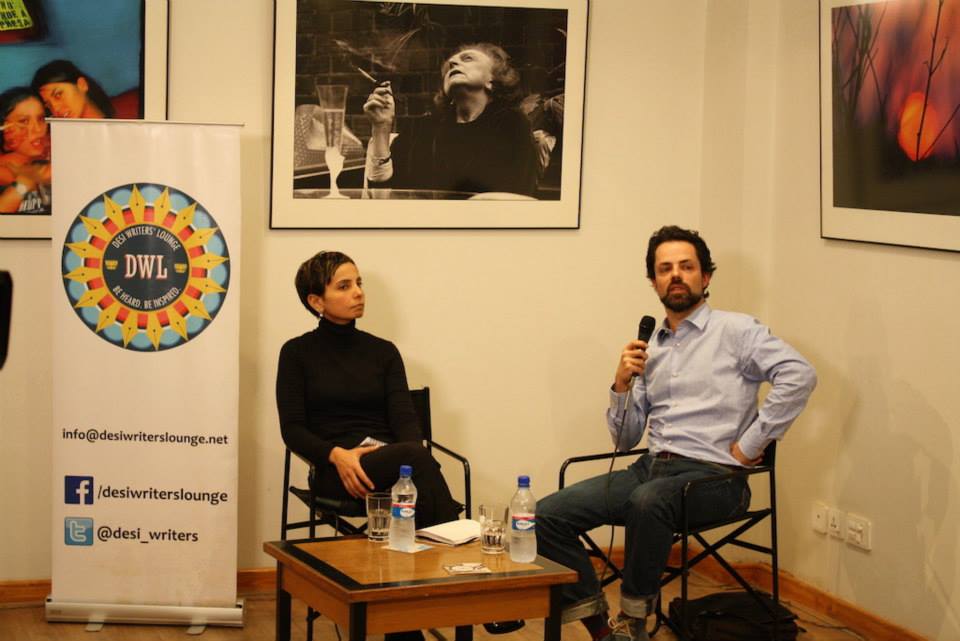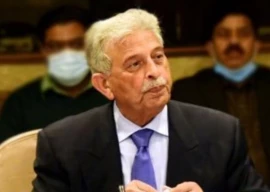
As he sat in the packed room at the T2F café on Monday, making revelation after revelation about the city that everyone thought they knew, the dumbstruck looks and awes from the audience reflected how little we actually identify with our own city. It almost felt as if a scientist was slowly decoding the system layer by layer right in front of their eyes. And the audience listened in hushed silence to the several theories he presented about the city everyone thought they knew; the theories backed by ample evidence and further cemented by historical fact.
But before we get into Gayer’s theories, let it be made clear that this piece is not an attempt to sum up his research. That would be an injustice to his genius and hard work. This is merely a highlight of what Gayer’s book, Karachi: Ordered Disorder and the Struggle for the City’, has to offer, compacted into a one-and-a-half hour talk by the author himself and further limited by a word count.
The beginning
Gayer starts from the very beginning – the time of partition. That is taken as the root of all the ethnic conflict and tensions that Karachi has seen since. Until then, Karachi had been a relatively peaceful city, modernised along colonial lines, much like its sister city, Bombay. The politics and economy were dominated by wealthy Hindu traders and Parsis. When they opted for India, they left behind a vacuum – something that the Muhajir community could never fill. “Post-partition, the city became a Muhajir-dominated zone almost overnight,” he said. The sheer magnitude of the migration was such that Karachi’s population, which stood at just over 400,000 in 1941, jumped to around 1.2 million in 1951. “Overnight, the city’s demographics completely changed – so did its politics and economy.”
But the ethnic conflict and resultant violence that has escalated over the years was not always about economic deprivation; it was more about identity – the identity of the city itself. Gayer claims his book is not centred on the Muhajir community; albeit they enjoy a significant mention in the narrative. “You simply cannot take the Muhajirs out of the equation when you talk about Karachi,” he reasoned.

Audience at the event. PHOTO: DESI WRITERS' LOUNGE
Shift in politics
The author went on to explain the emergence of the Muttahida Qaumi Movement (MQM) – from its humble origins as a student body to the largest political force in the city. He briefly touched upon the Bushra Zaidi incident: how this one traffic accident entirely changed the political landscape of the city.
Until the early 1970s, politics in Karachi was segregated along religious parties and the progressives. It was only in the late 1970s that ethnicity started to creep into the political arena. It was towards the end of the 1970s that the MQM was emerging as a strong force – still as a student body, but one that increasingly spoke for the cause of the Muhajirs who still shared feelings of resentment against the indigenous population of the city. Unlike other analysts and researchers, Gayer does not believe the MQM enjoyed the patronage of the Army. “Even if it was, it still does not explain its meteoric rise,” he reasoned. “The 1986 meeting at Nishtar Park was the single most-significant boost to the MQM’s cause.”
It was after this point that the dialogue grew interesting, forcing the audience on the edge of their seats as the foreign author picked apart their perception of the city.
Everyone is guilty
“Karachi is not a chaotic, anarchic and terribly violent city,” he said dismissively. “The homicide rate shows that Karachi does not even find itself in the top 50 violent cities of the world.” And all those cities on the list are much smaller than Karachi – both in terms of size and population. But what makes it different from those cities is that where the former have marked areas where violence is endemic, Karachi’s violence is not limited to any specific zone. It is diffused throughout the city. “Not everyone is equally affected by it, but no one is completely immune to it,” he said, adding that this has created a sense of fear among its inhabitants.
Gayer does not completely agree with the theory of resilience. He believes each incident of violence leaves behind a mark which collectively lead to the sense of fear that is present in Karachi’s residents today.
To understand Karachi, however, it is vital to break it into smaller areas, based on the violence they experience and their political affiliation. In Lyari for example, quoted Gayer, a young man once told him that though they were scared of getting killed by stray bullets or bombs but they had no fear of getting mugged. “These are the geographies of fear in Karachi, where the object of fear for one neighbourhood may not be shared by others.”
This fear, he believes, has conveniently been exploited by political parties and even industrialists. The industrialists, he says, are in collusion with political parties who provide the labour force which helps the former avoid unionisation. In return, the industrialists share a slice of their wealth with the political parties. “Bhatta (protection money)!” shouted someone from the audience. “Yes, bhatta,” Gayer smiled back. His next revelation was even more startling. “The irony is that today, the only political party practically working for the rights of labourers in areas such as Landhi and Korangi is the Ahle Sunnat Wal Jamat.”
‘Talibanisation’
Speaking about the increasing sectarianism that has suddenly mushroomed in Karachi’s politics over the last few years, Gayer credited the MQM as the first party to warn of this debacle in as early as the year 2000. During his research, he found plenty of mention of the looming spectacle in MQM’s internally circulated literature, warning its workers of the ‘Talibanisation’ of Karachi. The fact that the MQM was the first to notice the perpetual shift in the political scene did not surprise Gayer. Naturally, the MQM was quite sensitive to political Islam as its current vote bank had always been inclined towards religious parties in the past.
“At the time, however, the MQM was mainly wary of the Madrassah students who were threatening to compete with them for the streets,” he said. “Over the years, their interpretation of the word, Talibanisation, changed, at one point targeting the Awami National Party (ANP).” Gradually, the ANP was forced out of the city. This was perceivably the MQM’s biggest mistake, believes Gayer. “The void left behind by the ANP was filled in by the Taliban and this time, the MQM failed to counter them.”
Once they found themselves in the city, the Taliban quickly forged alliances with the local criminals who aided them in grasping and manipulating the system and the police.
In spite of the bleak picture that the events may project, Gayer believes there is still hope for the city. The scars of ethnic divide can be healed through engagement, he suggests. For now, however, Karachi works despite – and sometimes through – violence.
























1714024018-0/ModiLara-(1)1714024018-0-270x192.webp)









COMMENTS (2)
Comments are moderated and generally will be posted if they are on-topic and not abusive.
For more information, please see our Comments FAQ